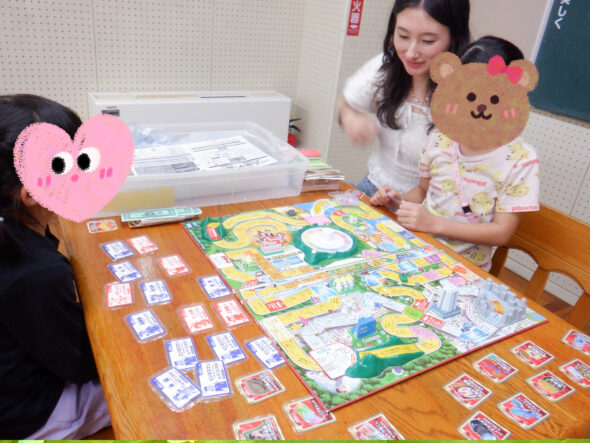
I volunteered at Mitsuba Kindergarten, a local preschool in Kyoto, where I spent time each week interacting with children aged 3 to 6. My responsibilities included playing games, drawing, singing songs, helping with origami, assisting children with snack time and bathroom trips, and participating in their daily routines alongside the other teachers. I was essentially a “sensei” figure to the kids, helping out wherever needed while using the opportunity to practice and improve my Japanese.
The experience was both heartwarming and humbling. While the children were incredibly affectionate—often drawing me pictures, hugging me, or sitting in my lap—there were also moments when the language barrier made me feel unsure or overwhelmed. I struggled at first with basic vocabulary and knowing how to communicate in a way kids would understand, but over time I gained confidence by listening carefully, asking questions, and even laughing along with them when I made mistakes. I also learned a lot about Japanese culture, especially how structure and rule-following are emphasized even from such a young age.
I highly recommend Mitsuba Kindergarten to students who enjoy working with children and want to practice their Japanese in a natural and supportive environment. It helps to go in with an open mind, a playful spirit, and the willingness to learn—not just language, but how to communicate and connect without always having the right words.








 For my CIP I chose to volunteer at an after-school children’s center that was near my homestay. The kids were elementary to middle schoolers, and I got to play games with them, help with homework, practice my Japanese, and learn about what childhood is like in Japan. It was an amazing experience that really made me feel like a part of the community. The memories I made with the children and the staff members will be forever very special to me. For those who are not the best at putting themselves out there in the social setting, I really recommend 1. volunteer activities, because they give you a sense of purpose, and/or 2. working with kids, since they will immediately take a liking to you. For those who do chose a similar CIP, I recommend getting to know some Japanese names for games beforehand and teaching the children games you used to play, too!
For my CIP I chose to volunteer at an after-school children’s center that was near my homestay. The kids were elementary to middle schoolers, and I got to play games with them, help with homework, practice my Japanese, and learn about what childhood is like in Japan. It was an amazing experience that really made me feel like a part of the community. The memories I made with the children and the staff members will be forever very special to me. For those who are not the best at putting themselves out there in the social setting, I really recommend 1. volunteer activities, because they give you a sense of purpose, and/or 2. working with kids, since they will immediately take a liking to you. For those who do chose a similar CIP, I recommend getting to know some Japanese names for games beforehand and teaching the children games you used to play, too!
